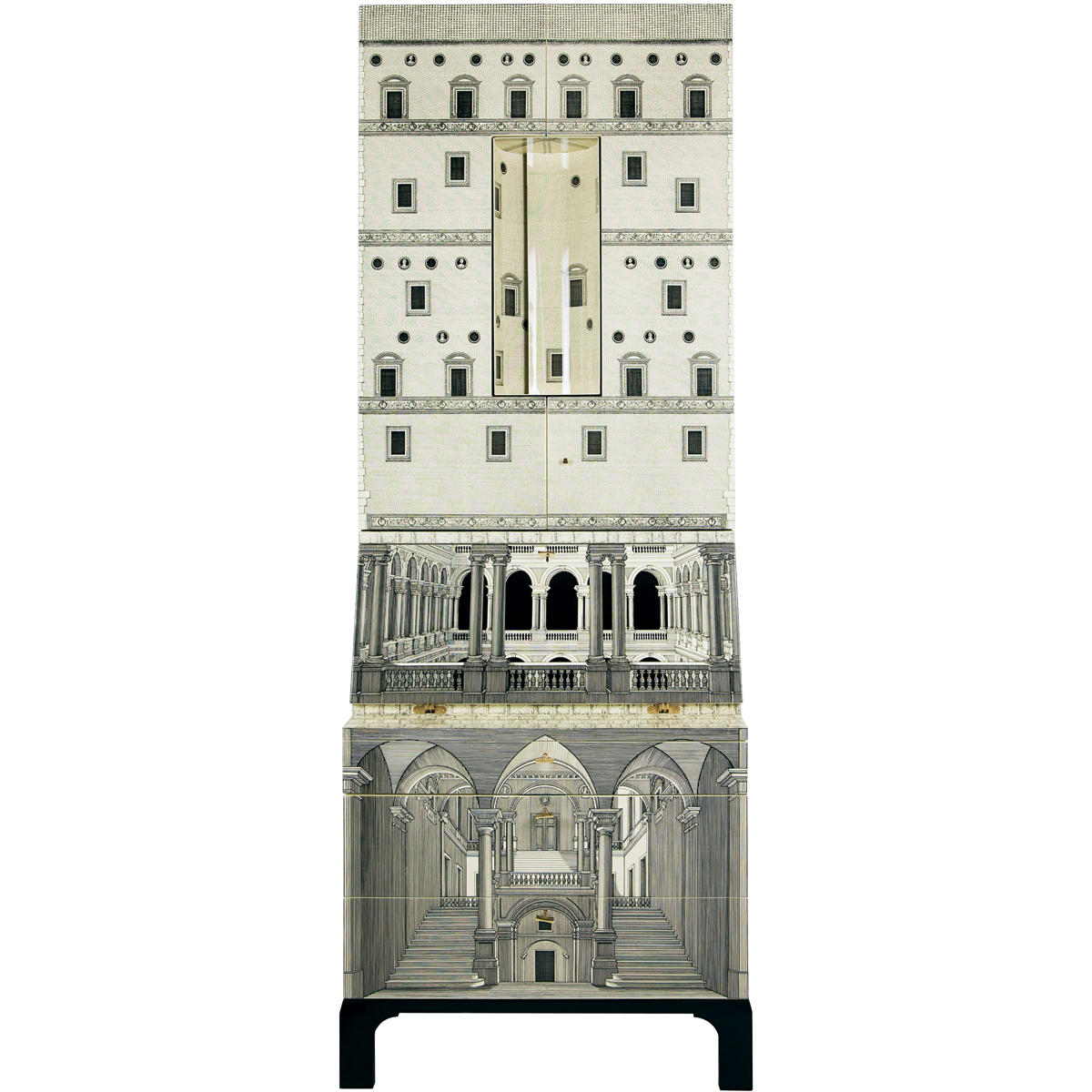How to Decoupage

Get the look of this Fornasetti Trumeau cabinet ($29,980, palazzetti.com) with decoupage. (Photograph Courtesy of Fornasetti)
1. Go Shopping
Find the perfect piece of furniture by combing the Cambridge Antique Market or Bostonwood unfinished-furniture stores. Next, search for images that complement your home’s design. If you love Fornasetti’s use of Renaissance-era drawings (shown above), Dover Publications’ extensive collection of books containing historical reprints is a great resource. Once you find suitable imagery, scan it, enlarge it to fit your chosen furniture, and print it out on heavy paper.
2. Clean and Prep
Fill in any nicks or knots on older furniture with spackle, then thoroughly sand and clean all surfaces until they’re oil- and dust-free. Unfinished wood pieces should be primed and then sanded. Laminated pieces need only a good once-over with a Mr. Clean Magic Eraser.
3. Create Templates
Using paper and pencil, carefully trace every surface you intend to cover, creating a separate template for each section of the piece. Position these templates to frame your print in an interesting way, then trace the templates onto the image.
4. Slice and Dice
Carefully cut your print to size, leaving an extra quarter-inch all around—it will be easy to trim off excess paper later.
5. Get Gluing
In a cup, mix three parts glue with one part water and paint the solution onto your piece with a foam brush. When working with larger furniture pieces, do one section at a time so the glue doesn’t dry out before you apply the paper.
6. Wet It Down
Submerge your print in water for about 10 seconds, or dampen it with a sponge so it will mold easily to the surface of your furniture.
7. Place Your Print
While the glue is still wet, apply the paper to the furniture, taking care to make sure it’s straight and centered. Use a wet brayer (print roller) and sponge to work out any bubbles or excess glue. Continue until all desired surfaces are covered. Allow the piece to dry overnight. Once the paper is stiff, you can trim off any excess.
8. Seal the Deal
When the piece is completely dry, apply five coats of polyurethane, allowing an hour’s drying time between each application.


